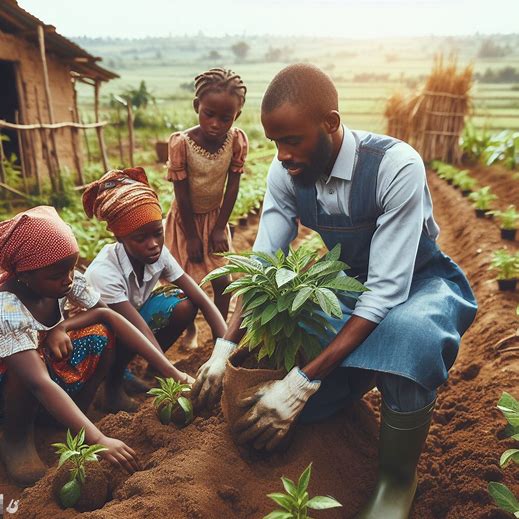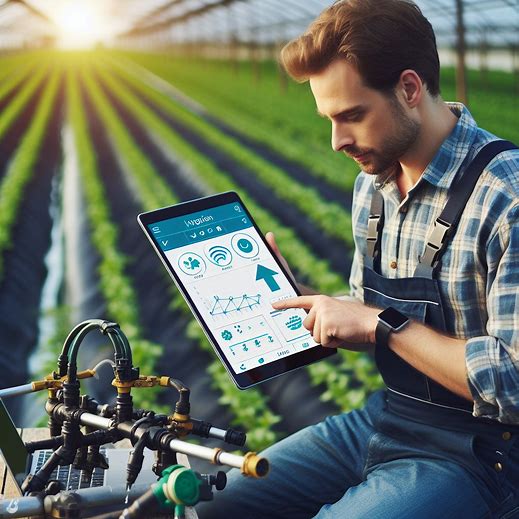Soil health is the foundation of every successful harvest. Healthy soil provides the optimal conditions for plant growth, resilience, and diversity. However, soil health is not a given; it requires careful management and maintenance. In 2024, farmers face increasing challenges and opportunities to improve their soil health, using various strategies that promise not just bountiful, but sustainable and thriving crops. In this blog post, we will show you how to improve soil health for bountiful harvests in 2024, and what are the benefits, challenges, and examples of this approach.
What is Soil Health?
Soil health is the capacity of the soil to function as a living system, supporting plant, animal, and human life. Soil health depends on various factors, such as:
Soil structure: The physical arrangement of soil particles, pores, and aggregates, which affects water infiltration, aeration, and root penetration.
Soil organic matter: The amount and quality of organic materials in the soil, such as plant residues, microorganisms, and humus, which affect nutrient cycling, water retention, and soil fertility.
Soil nutrients: The availability and balance of essential elements for plant growth, such as nitrogen, phosphorus, potassium, calcium, and magnesium, which affect crop yield and quality.
Soil pH: The measure of acidity or alkalinity of the soil, which affects the solubility and availability of nutrients, and the activity of microorganisms.
Soil biodiversity: The diversity and abundance of living organisms in the soil, such as bacteria, fungi, protozoa, nematodes, earthworms, and insects, which affect soil processes, such as decomposition, nutrient cycling, and pest control.
Soil health is not static, it can change over time due to natural or human-induced factors, such as climate, erosion, tillage, cropping, fertilization, and irrigation. Therefore, soil health needs to be monitored and managed regularly, using various strategies and practices.
How to Improve Soil Health for Bountiful Harvests in 2024?
To improve soil health for bountiful harvests in 2024, you need to follow some simple steps, such as:
Test your soil and balance your nutrients: Before you apply any soil improvement strategy, you need to test your soil and analyze its nutrient levels and pH. You can use tools like SoilKit or SoilOptix to collect and send your soil samples for testing, and get a detailed report and recommendations. Based on the results, you can balance your soil nutrients, using organic or synthetic fertilizers, lime, or gypsum, to ensure your soil provides the optimal conditions for plant growth.
Use cover crops for soil enrichment: Cover crops are plants that are grown between main crops, to protect and improve the soil. Cover crops can enhance soil structure, prevent erosion, and add organic matter, promoting a vibrant and resilient ecosystem beneath the surface. You can use tools like Cover Crop Decision Tool or Cover Crop Chart to choose the best cover crops for your soil and climate, and learn how to plant and manage them effectively.
Compost your organic waste: Composting is the process of transforming organic waste, such as kitchen scraps, yard trimmings, and animal manure, into nutrient-rich compost that nourishes your soil. Composting can reduce your waste disposal costs, improve your soil fertility, and reduce your greenhouse gas emissions. You can use tools like Compost Calculator or Compost Mix Calculator to estimate the amount and ratio of materials you need for composting, and learn how to build and maintain your compost pile or bin. Learn more about organic farming here.
Adopt no-till farming practices: No-till farming is a farming system that avoids conventional tillage methods, such as ploughing, disking, or harrowing, and leaves the soil undisturbed. No-till farming can preserve soil structure, reduce erosion, and enhance water retention, contributing to the long-term health of your fields. You can use tools like No-Till Farmer or No-Till 101 to learn the benefits and challenges of no-till farming, and get tips and advice from experts and other farmers.
Rotate and diversify your crops: Crop rotation is a technique that involves changing the crops grown in a field each season or year, to disrupt pest cycles and promote balanced nutrient uptake, preventing soil depletion. Crop diversity is a technique that involves planting different crops together or in succession, to create a diverse and resilient crop environment, that minimizes the need for synthetic interventions. You can use tools like Crop Rotation Planner or Crop Diversification Tool to plan and implement your crop rotation and diversity strategies, and optimize your crop performance and soil health.
Use precision agriculture for soil management: Precision agriculture is a farming system that uses technology, such as sensors, drones, satellites, GPS, and data analytics, to measure, monitor, and manage the variability of crops, livestock, and fields. Precision agriculture can help you optimize your resource allocation, such as water and nutrients, and reduce your environmental impact and costs. You can use tools like Precision Agriculture or [Precision Soil Management] to learn how to use precision agriculture for soil management, and get access to various technologies and services.
Mulch your soil with organic materials: Mulching is a technique that involves covering the soil surface with organic materials, such as straw, leaves, wood chips, or grass clippings. Mulching can help you conserve moisture, regulate soil temperature, and suppress weeds, and also add organic matter and nutrients to your soil. You can use tools like [Mulch Calculator] or [Mulch Guide] to estimate the amount and type of mulch you need for your soil, and learn how to apply and maintain it properly.
Implement soil conservation practices: Soil conservation is a set of practices that aim to prevent soil erosion and degradation, and promote water conservation and quality. Soil conservation practices include contour plowing, terracing, strip cropping, windbreaks, buffer strips, and riparian zones. You can use tools like [Soil Conservation] or [Soil and Water Conservation] to learn more about soil conservation practices, and how they contribute to the overall health of your fields and watersheds.
By following these steps, you can improve your soil health for bountiful harvests in 2024, and enjoy the benefits of this approach.
What are the Benefits of Improving Soil Health for Bountiful Harvests?
Improving soil health for bountiful harvests can bring various benefits, such as:
Saving money and resources: Improving soil health can help you save money and resources, by reducing your dependence on external inputs, such as fertilizers, pesticides, and irrigation. For example, using cover crops can reduce your fertilizer costs by up to 40%, while using composting can reduce your waste disposal costs by up to 60%.
Increasing productivity and quality: Improving soil health can help you increase your crop productivity and quality, by enhancing your crop health, resilience, and diversity. For example, using no-till farming can increase your crop yields by up to 15%, while using crop rotation can increase your crop quality by up to 10%.
Enhancing sustainability and responsibility: Improving soil health can help you enhance your sustainability and responsibility, by reducing your environmental impact, human health risks, and social conflicts. For example, using precision agriculture can reduce your greenhouse gas emissions by up to 20%, while using mulching can reduce your water consumption by up to 50%.
Conclusion
Soil health is the foundation of every successful harvest. Healthy soil provides the optimal conditions for plant growth, resilience, and diversity. However, soil health is not a given; it requires careful management and maintenance. In 2024, farmers face increasing challenges and opportunities to improve their soil health, using various strategies that promise not just bountiful, but sustainable and thriving crops. In this blog post, we have shown you how to improve soil health for bountiful harvests in 2024, and what are the benefits, challenges, and examples of this approach. Join us in creating a legacy of thriving and resilient soils, where bountiful harvests are not just a pursuit, but a commitment.



